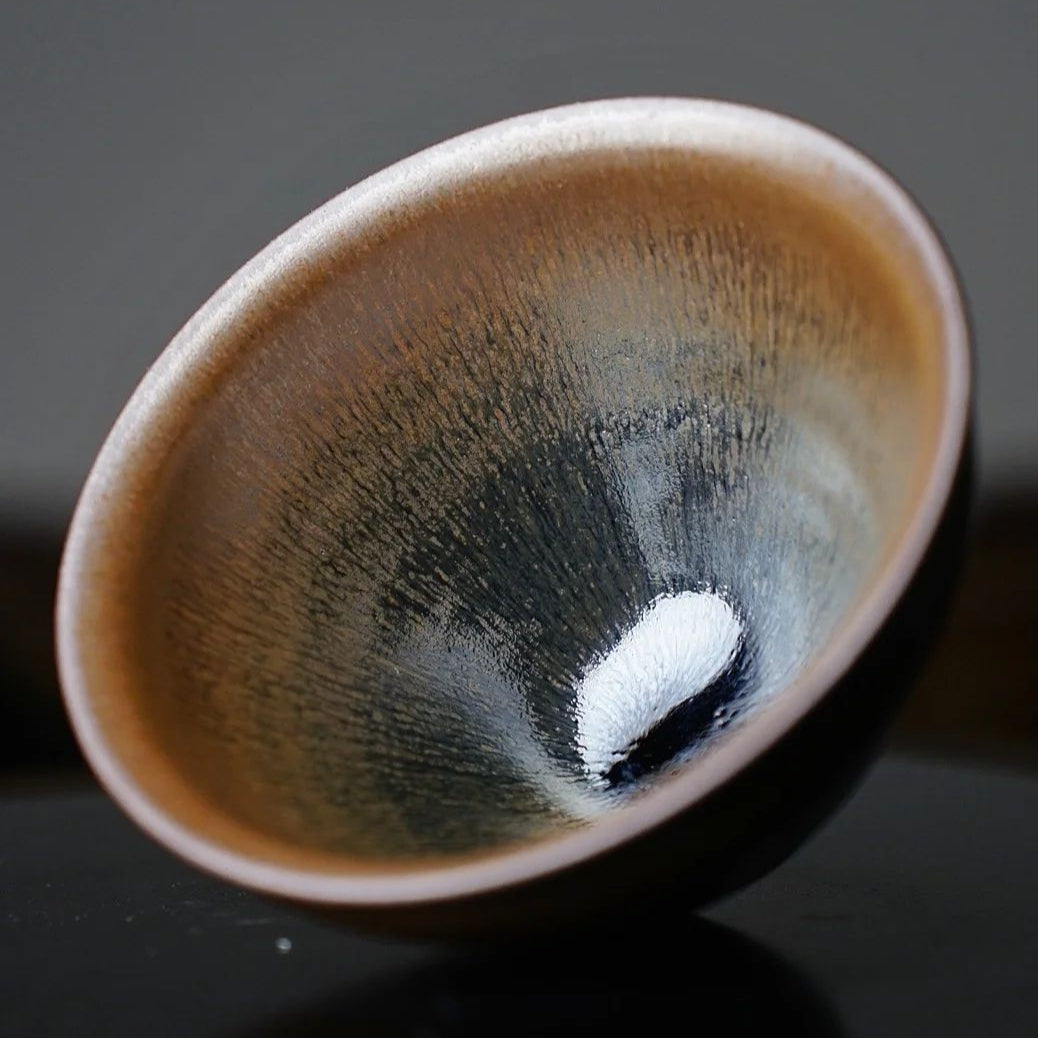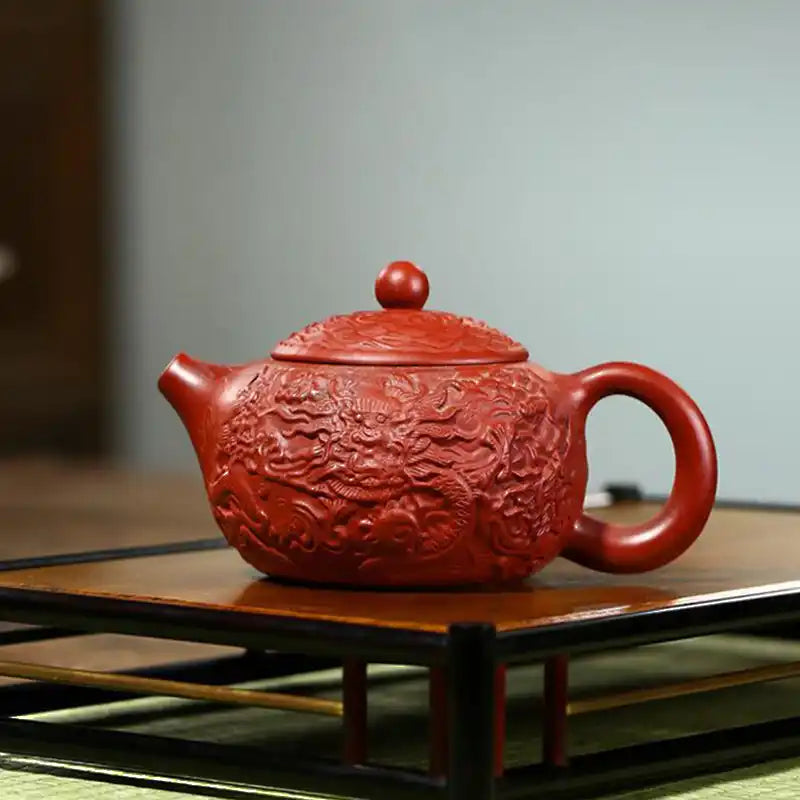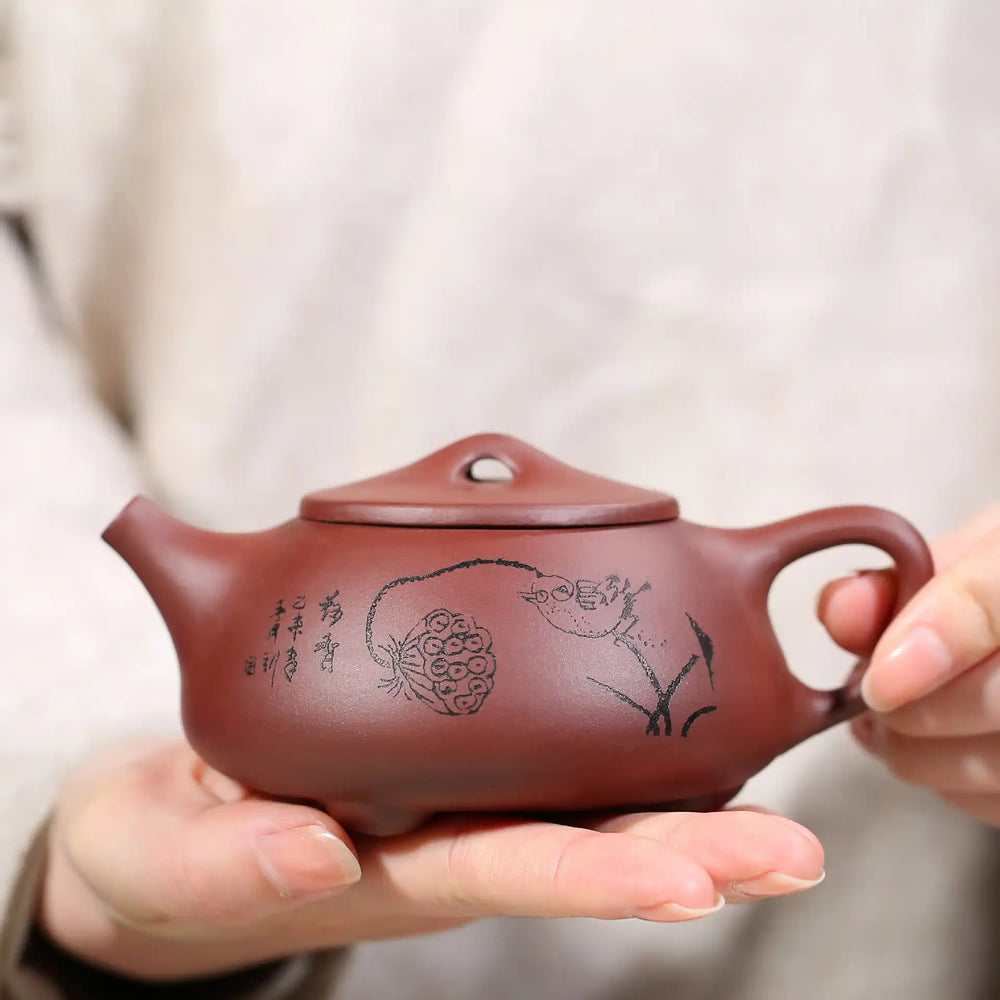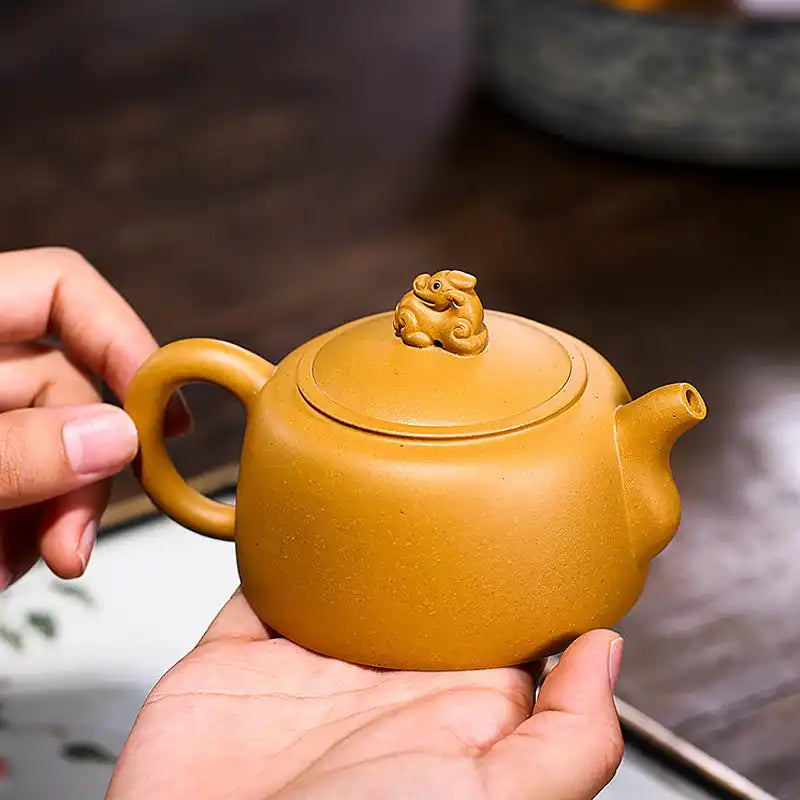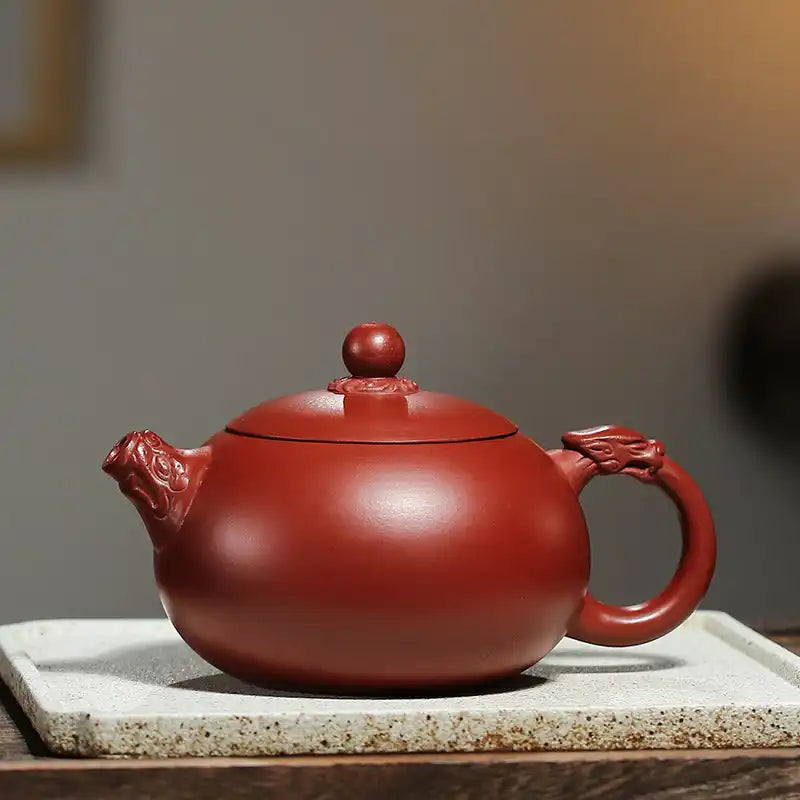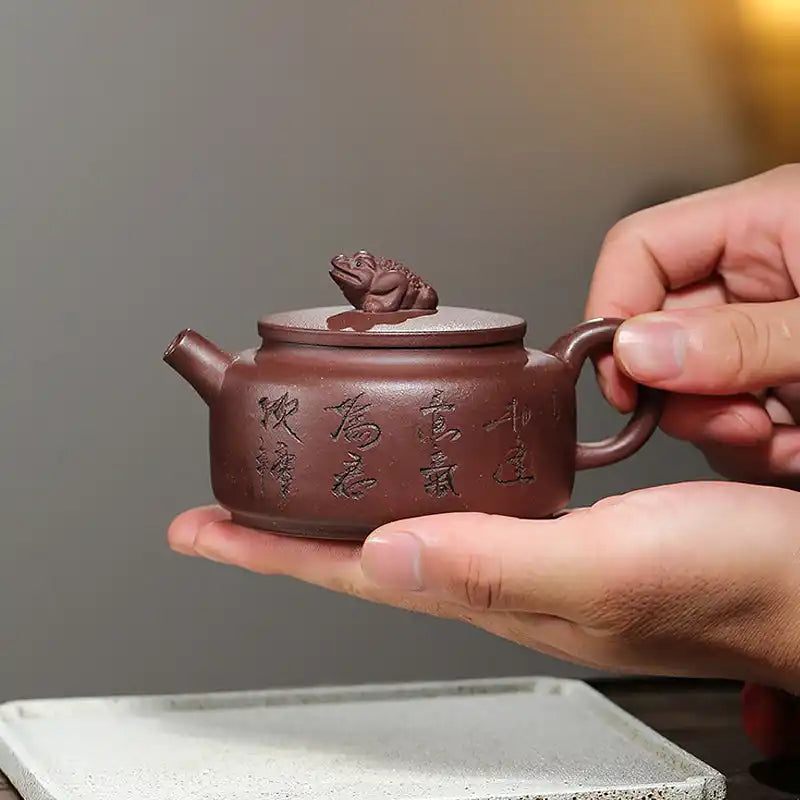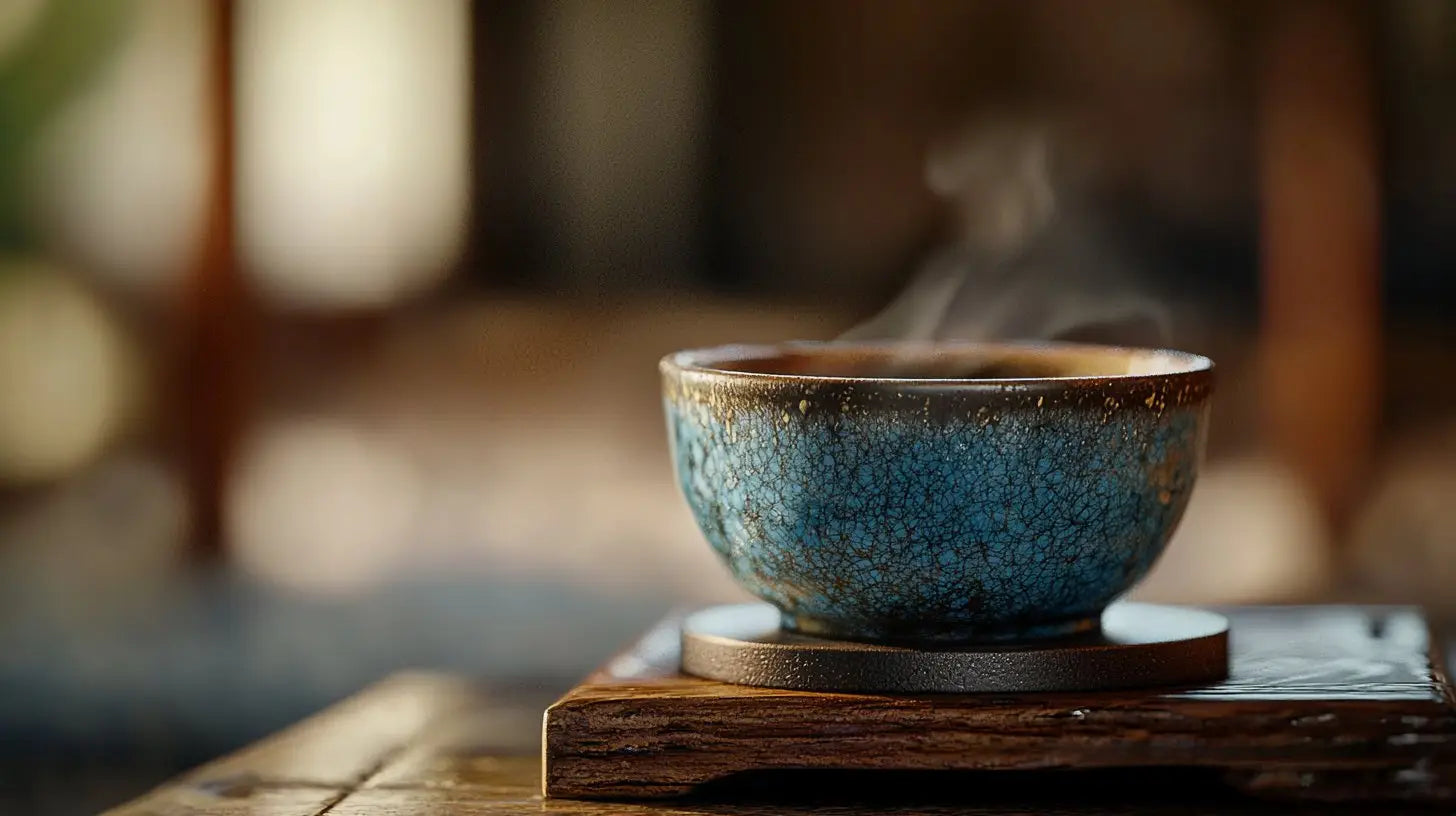🏺 Jian Zhan Tea Bowls: Song Dynasty's Mystical Oil Spot Glazes
Discover the ancient art and science behind China's most enigmatic ceramic treasures - where imperial tea culture meets mystical glazing techniques.
 🏛️ The Imperial Origins of Jian Zhan
🏛️ The Imperial Origins of Jian Zhan
Jian Zhan (建盏), literally meaning "Jian bowls," represents one of China's most celebrated ceramic achievements. These mystical tea bowls emerged during the Song Dynasty (960-1279 CE) in Jianyang, Fujian Province, becoming the preferred vessels for the imperial tea ceremony and earning reverence that continues today.
🎭 Song Dynasty Tea Culture
During the Song Dynasty, tea drinking evolved from a simple beverage consumption to an elaborate cultural ritual. Emperor Huizong himself was a tea enthusiast who wrote extensively about tea culture, elevating Jian Zhan bowls to imperial status. The dark glazes were specifically prized because they provided the perfect contrast to highlight the white foam created during tea whisking ceremonies.
The Song Dynasty marked the golden age of Chinese ceramics, and Jian Zhan represented the pinnacle of technical and artistic achievement. These bowls were not merely functional objects but embodied the philosophical ideals of the era - simplicity, natural beauty, and harmony between human craftsmanship and natural forces.
🔬 The Science Behind the Magic: Understanding Oil Spot Glazes
The mystical beauty of Jian Zhan oil spot glazes results from a complex interplay of chemistry, physics, and artisan skill. These "oil spots" are not painted or applied decorations but emerge naturally during the firing process through a phenomenon that ceramic scientists still study today.
⚗️ The Chemistry of Oil Spots
The oil spot effect occurs due to the high iron content in both the clay body and glaze. During firing at temperatures exceeding 1300°C (2372°F), iron oxide crystals form and migrate through the molten glaze. As the kiln cools, these crystals create the distinctive silvery or golden spots that seem to float on the surface like oil on water.
Key Scientific Factors:
- Iron Oxide Content: 8-12% iron oxide creates optimal conditions
- Firing Temperature: Precise control between 1280-1320°C
- Kiln Atmosphere: Reduction firing creates the necessary chemical environment
- Cooling Rate: Controlled cooling allows crystal formation
The unpredictability of this natural process means that no two Jian Zhan bowls are identical. Master potters spend decades learning to read the subtle signs that indicate optimal firing conditions, yet even they cannot guarantee the formation of perfect oil spots.
 🎨 Types of Jian Zhan Glazes: A Collector's Guide
🎨 Types of Jian Zhan Glazes: A Collector's Guide
Jian Zhan bowls exhibit several distinct glaze patterns, each with its own characteristics and rarity. Understanding these variations helps appreciate the complexity and artistry involved in their creation.
🌟 Oil Spot
The most famous pattern featuring silvery or golden spots resembling oil drops on water. Highly prized by collectors.
🐰 Hare's Fur
Fine streaks resembling rabbit fur, created by iron crystals forming linear patterns during firing.
🌙 Partridge Feather
Rare pattern with spots resembling partridge feathers. Extremely valuable and sought after.
⚫ Plain Black
Deep black glaze without patterns. Simple yet elegant, representing the essence of Song aesthetics.
🏆 The Legendary "Yohen" Tenmoku
In Japan, Jian Zhan bowls are called "Tenmoku." The most famous example is the "Yohen Tenmoku" housed in Tokyo's Seikado Bunko Art Museum. This National Treasure displays an otherworldly blue and purple iridescence that has never been successfully replicated, making it one of the most valuable ceramics in the world.
 🏭 The Lost Art: Why Authentic Jian Zhan Disappeared
🏭 The Lost Art: Why Authentic Jian Zhan Disappeared
The production of authentic Jian Zhan ceased during the Yuan Dynasty (1271-1368 CE) when Mongol rulers favored different ceramic styles. The kilns of Jianyang fell silent, and the closely guarded secrets of oil spot glaze creation were lost to time.
📚 Factors Leading to the Decline:
- Political Changes: New dynasties favored different aesthetic preferences
- Tea Culture Evolution: Tea preparation methods changed, reducing demand
- Economic Factors: High production costs and technical difficulty
- Knowledge Loss: Master potters' secrets died with them
For over 600 years, authentic Jian Zhan remained a lost art. Surviving pieces became treasured artifacts in museums and private collections, with prices reaching astronomical levels at auctions.
🔄 The Modern Revival: Rediscovering Ancient Secrets
The 20th century witnessed determined efforts to revive Jian Zhan production. Chinese ceramic artists and scientists worked tirelessly to decode the ancient techniques through archaeological research, chemical analysis, and countless experiments.
🔬 Scientific Reconstruction
Modern revival efforts combined traditional craftsmanship with scientific analysis. Researchers studied ancient shards, analyzed clay compositions, and used electron microscopy to understand glaze structures. This marriage of ancient wisdom and modern science gradually unlocked the secrets of oil spot formation.
Today's master potters have successfully recreated many traditional glaze effects, though the most spectacular patterns remain elusive. Each firing is still an experiment, with success rates for premium oil spot patterns remaining low even among skilled artisans.
 🍵 Using Jian Zhan: The Tea Drinker's Perspective
🍵 Using Jian Zhan: The Tea Drinker's Perspective
Beyond their artistic value, Jian Zhan bowls offer unique functional benefits that enhance the tea drinking experience. The thick walls provide excellent heat retention, while the iron-rich glaze is believed to improve water quality and tea flavor.
🌡️ Thermal Properties
The dense ceramic body and thick walls of Jian Zhan bowls create superior heat retention compared to thinner porcelain. This allows tea to maintain optimal drinking temperature longer, enhancing the overall experience.
💧 Water Enhancement
Traditional Chinese tea culture attributes water-softening properties to Jian Zhan bowls. While scientific evidence is limited, many tea enthusiasts report improved taste when using authentic pieces.
🎋 Proper Care and Seasoning
Like Yixing teapots, Jian Zhan bowls benefit from proper seasoning. Regular use with quality tea gradually builds up a patina that enhances both appearance and function. Never use soap or detergents - only rinse with hot water and allow to air dry.
 💎 Collecting Jian Zhan: Investment and Appreciation
💎 Collecting Jian Zhan: Investment and Appreciation
The Jian Zhan market has experienced tremendous growth as collectors worldwide recognize their artistic and historical value. Understanding quality factors helps both collectors and tea enthusiasts make informed decisions.
🔍 Quality Assessment Factors:
- Glaze Quality: Clarity, depth, and pattern definition
- Oil Spot Formation: Size, distribution, and metallic luster
- Shape and Proportion: Classical Song Dynasty forms
- Firing Quality: Absence of defects or kiln damage
- Artist Reputation: Recognition and skill level of the potter
Authentic Song Dynasty pieces command millions at auction, while high-quality modern reproductions by master potters can range from hundreds to thousands of dollars depending on the artist's reputation and the piece's quality.
"A perfect Jian Zhan bowl captures the essence of the universe in its glaze - the dance of fire and earth, the marriage of intention and chance, the beauty that emerges when human skill meets natural forces." - Contemporary Ceramic Master
🛒 Experiencing Jian Zhan Today
For those inspired to experience the magic of Jian Zhan bowls, authentic pieces crafted by skilled contemporary masters offer an accessible way to connect with this ancient tradition.
🎁 For Tea Enthusiasts
Modern handmade Jian Zhan tea bowls provide an authentic way to enhance your tea ceremony while connecting with Song Dynasty traditions.
📖 Continue Your Journey
Explore our educational resources about traditional tea ceremonies and discover how Jian Zhan bowls fit into the broader context of Chinese tea culture.
🌟 Conclusion: The Eternal Appeal of Jian Zhan
Jian Zhan tea bowls represent more than ceramic artistry - they embody the Chinese philosophical ideal of finding profound beauty in simplicity. Each bowl tells a story of fire and earth, of human ambition meeting natural forces, of traditions that transcend time.
Whether appreciated as art objects, used in tea ceremonies, or studied for their technical achievements, Jian Zhan bowls continue to captivate and inspire. In our modern world of mass production, they remind us of the irreplaceable value of handcrafted beauty and the mysteries that emerge when skill meets serendipity.
The oil spots that dance across their surfaces are not mere decorations but windows into the cosmic dance of elements - a reminder that the most beautiful things in life often emerge from the marriage of intention and chance, control and surrender.
